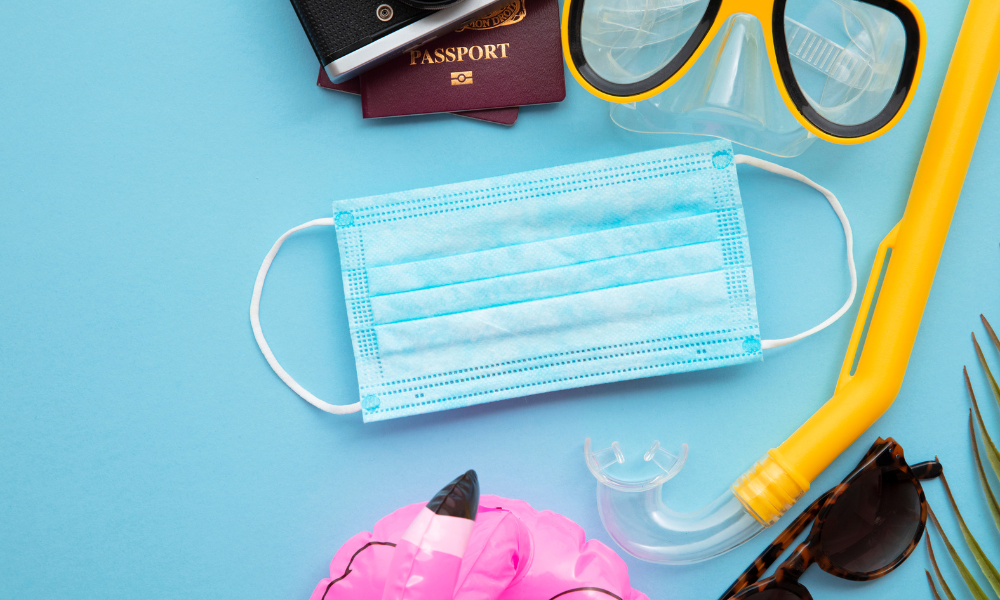With the worst of the COVID-19 pandemic (hopefully) in the rearview mirror, the world is embracing a new “normal” that once again includes travel, dining out and large social gatherings. But this “normal” comes with a patchwork of requirements that vary from country to country, state by state and even city by city with many left wondering, what does summer travel look like?
What Does Summer Travel Look Like?
More people are expected to head out for summer travel, starting with this past Memorial Day weekend. AAA anticipated 39.2 million people will travel 50 miles or more from home during the unofficial start of summer. That is an increase of 8.3% from 2021, and in line with travel numbers from 2017. Air travel is up 25% over last year, the second-largest increase since 2010.
If you’re ready to step back into the world, here are some things you need to know and should consider when making your plans.
Flying
Mask restrictions have been lifted for all domestic flights. Most US airports do not require masks with the exception of John F. Kennedy and La Guardia airports in New York and at Los Angeles International Airport in California.
Of course, wearing a mask is always an option. The US Centers for Disease Control and Prevention (CDC) recommends wearing a mask in indoor areas of public transportation such as airplanes trains, buses and ferries and transportation hubs such as airports, stations and seaports.
If you have international summer travel plans, check the requirements at your final destination. The US Department of State-Bureau of Consular Affairs has a list of rules for each country. Requirements range from a negative COVID test to proof of vaccination to nothing.
However, note that anyone returning to the US from abroad, including US citizens, must have a negative COVID test within one day of travel. Individuals who have recently recovered from COVID-19 (within 90 days) can travel with a letter from a licensed healthcare provider or a public health official stating they are clear to travel.
Fortunately, many airports have testing available on site and airlines are also offering through a third-party COVID tests that can be packed in carry-on luggage. The tests are taken prior to departure through a video chat and results are shared directly with the airline.
Along with the individual country requirements, the State Department also lists where tests are available in each country.
Be prepared for delays and cancellations since demand for flights is expected to soar, while capacity and the number of available pilots is falling. The number of US passengers planning to fly for their summer travel is expected to exceed pre-COVID levels. The number of daily summer travel fliers could reach 3 million a day, passing the previous high of 2.8 million, according to the American Association of Airport Executives.
At the same time, June capacity is 8.3% below 2019 levels on domestic routes flown by the six largest US airlines, according to data from Cirium. It is expected to be 6.6% below in July and 4% below in August. The number of flights have been cut due to a shortage in pilots and rising fuel costs that have made some flights too expensive to operate.
So far this year, the rate of cancellation is six times the number the airlines target. Through May 22, seven major carriers had canceled 3% of flights, according to FlightAware.com. The typical industry target is between 0.3% and 0.5%. In summer 2021, the cancellation rate was 1%.
Along with checking with your airline directly, FlightAware, Flightstats and Flight Radar all track departures and arrivals for most commercial flights. You’ll want to stay aware of cancelations in order to better manage summer travel plans.
Dining
Most restaurants have lifted capacity, vaccination, and masking requirements. Earlier this spring, restaurants in major cities such as New York, Chicago, and Los Angeles required patrons to show a vaccination card prior to dining indoors. Most of those requirements have been lifted, creating an easier summer travel experience.
If in doubt, ask the restaurant ahead of time if they have any COVID-19 restrictions. Also, when searching for restaurants and hours, be sure to find the most up-to-date information. During COVID, many restaurants restricted hours and some have yet to update listings online. A phone call is best, especially if you’re dealing with a smaller, local restaurant.
Hotels
Masking requirements have also been lifted at most hotels and service is returning to normal. Many have reopened onsite restaurants and restarted free breakfasts. Again, check directly with the property to see if any restrictions are still in place.
When it comes to housekeeping services during a stay, many of the hotel chains are still limiting daily service to longer stays. While this started during COVID as a safety measure, the holdover is likely due to reduced staff and cost savings. You can anticipate to see these changes during your summer travel plans.
Depending on the hotel chain, housekeeping has been changed to a variety of policies from every sixth night, on request only or just light housekeeping. Additional towels and toiletries can be requested, and some hotels suggest leaving trash outside for pick up.
Research your hotel ahead of time. Information on housekeeping can usually be found under headings such as “amenities” or “COVID-19 safety.” Higher end properties such as some Hilton brands, the Waldorf Astoria and Conrad Hotels still offer daily housekeeping.
With these things in mind, hopefully your summer travel is a breeze.

